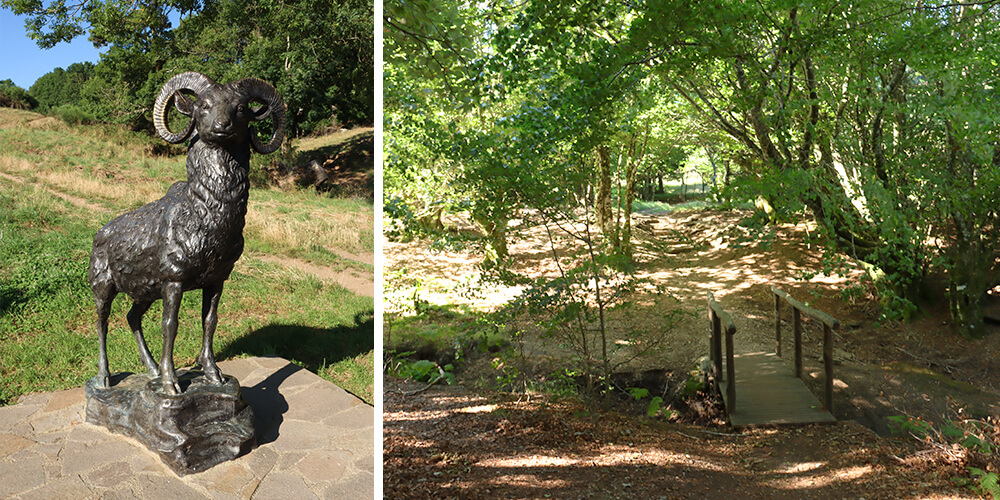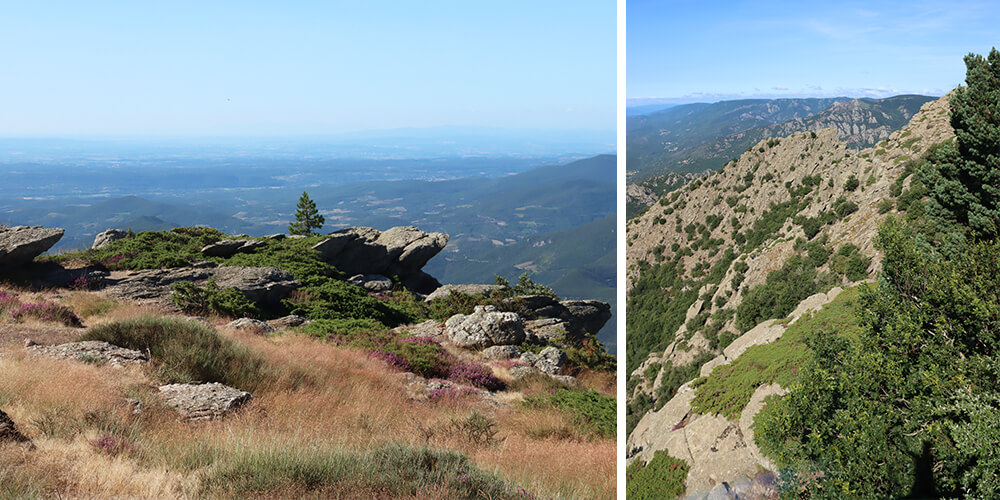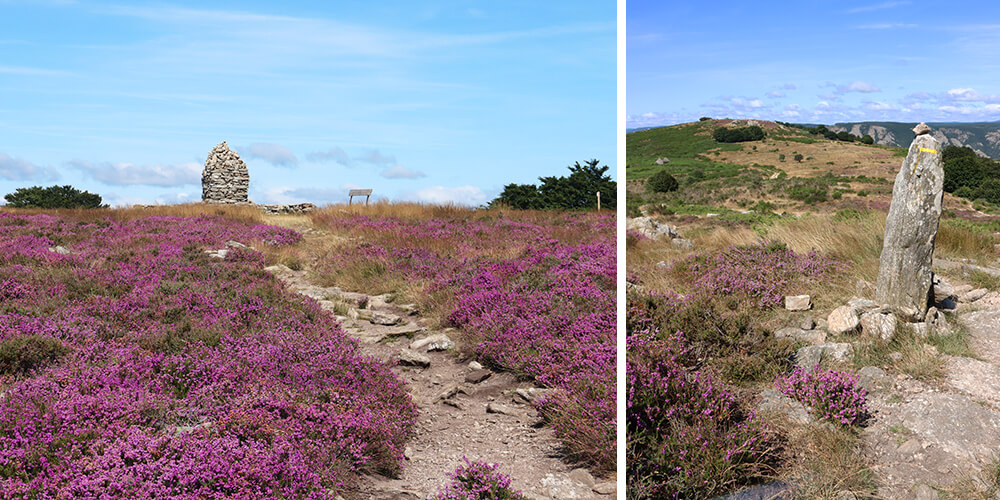
When driving land inwards from Béziers toward Saint-Chinian or Roquebrun, chances are high that you will see the impressive Mont Caroux in the distance. Caroux comes from the Occitan’ Lo Cairosus’, which means ‘the stone’. Its recognisable shape is visible as far away as the Mediterranean Sea, serving as a landmark for sailors. The mountain is in the Massif Central, where you can do great hikes. This time, Chéri and I decided to climb the summit in full summer when the slopes are covered under a purple heather blanket.
Douch
The 8-kilometre hike, called ‘Circuit: Le Sommet du Caroux’, starts in the little hamlet of Douch, part of Rosis. By following the simple yellow stripes, this walk takes about three hours (2.5 without moaning kids…), according to the sign. Chéri and I left in good spirits, to begin with an ascent of about 300 meters through a beautiful forest. Soon enough, the path went horizontal again, and we marvelled at the breathtaking view over the Espinouse Mountains, part of the Haut-Languedoc Regional Natural Park. A bit further on, Chéri and I arrived at the orientation display so that we understood what we saw in front of us. The Caroux is a real mountain, split by rivers and canyons like the Gorges d’Héric and the Gorges de Colombières. Gazing over the magnificent landscape, it was easy to understand how this magical place has inspired many mysterious legends.

La Femme Allongée
Enjoying a little break, I told Chéri the legend of La Femme Allongée, as the mountain is locally known, meaning the reclining woman. The story goes back to the time of the Titans. Both Earth and Heaven had had enough of the destructive giants that populated the planet and Zeus wanted to kill them all. Only the gentle giants Cébenna and Réa survived Jupiter’s thunder. Until one night when Cébanna lay on a rock. Suddenly Cébanna felt the rocks soften under her. She threw back her head, let out a cry of despair and pain as the tears trickled from her eyes into the waters of the Rieutord River. Réa came to the rescue but got stuck in the Héric River, where his head was turned into a rock. Meanwhile, rocks covered the body of Cébenna, and nature turned her body into stone forever.

Peatland
After fully having indulged in the view, Chéri and I went back to the track by following the yellow signs. Walking through a changing landscape, we unexpectedly found ourselves in the middle of peatland. I love walking on boardwalks, I don’t know why, and here they were, right in front of us! It was only a small part, but still, I enjoyed this change of scenery. La Tourbière, as peatland is called in French, is quite rare in the Haut-Languedoc Natural Park, only less than 1 % of its territory. If lucky, you might encounter local animals like mouflons, roe deer and wild boars. From here, the abundantly flowering heather marked the path to the summit of Mont Caroux.

Actual summit
As the actual highest point of Mont Caroux is a little higher than at the orientation table (1,090 versus 1,059 meters), we had a bit more climbing to do. But it was nothing too bad, also it felt like the purple heather haze gave us wings. Arriving at the very summit of Mont Caroux, we sat there for a while to absorb the gorgeous 360° view. After a short break and a little nap in the sun, we continued on our way and headed back to Douch via a very easy gravelled path. Although I normally suggest hiking in spring or autumn because of the hot summer temperatures, I do recommend this one during the high season. The flowering heather gives it a whole different experience and adds to the magic of this natural site.


